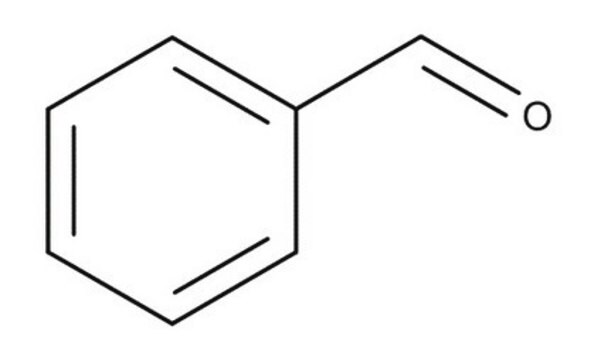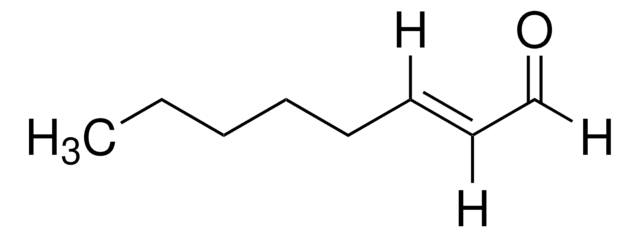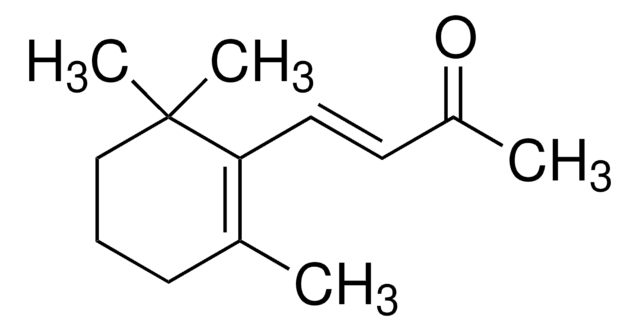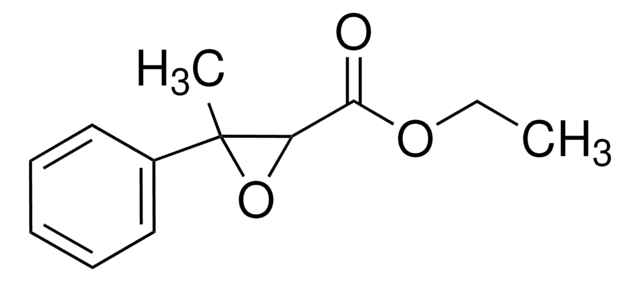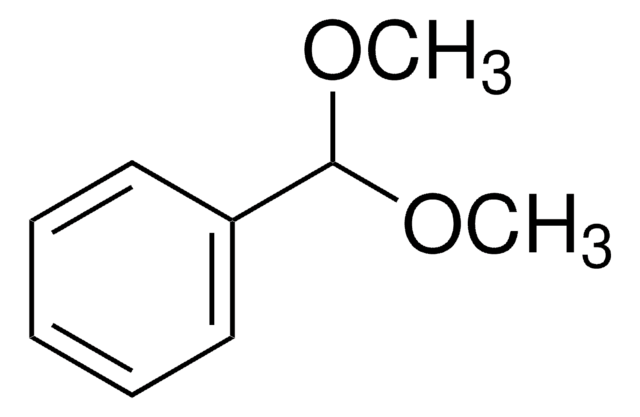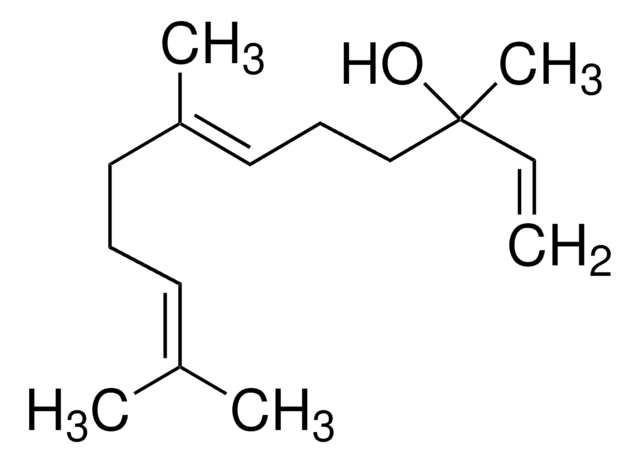Wichtige Dokumente
W212709
Benzaldehyd
≥98%, FG, FCC
Synonym(e):
Bittermandel
About This Item
Empfohlene Produkte
Biologische Quelle
synthetic
Qualitätsniveau
Qualität
FG
Halal
Kosher
Agentur
meets purity specifications of JECFA
Einhaltung gesetzlicher Vorschriften
EU Regulation 1334/2008 & 178/2002
FCC
FDA 21 CFR 117
FDA 21 CFR 182.60
Dampfdichte
3.65 (vs air)
3.7 (vs air)
Dampfdruck
4 mmHg ( 45 °C)
Assay
≥98%
Form
liquid
Selbstzündungstemp.
374 °F
Expl.-Gr.
1.4 %, 20 °F
Brechungsindex
n20/D 1.545 (lit.)
pH-Wert
5.9 (20 °C)
bp
178-179 °C (lit.)
mp (Schmelzpunkt)
−26 °C (lit.)
Dichte
1.044 g/cm3 at 20 °C (lit.)
Anwendung(en)
flavors and fragrances
Dokumentation
see Safety & Documentation for available documents
Nahrungsmittelallergen
no known allergens
Organoleptisch
almond; cherry; sweet
SMILES String
O=Cc1ccccc1
InChI
1S/C7H6O/c8-6-7-4-2-1-3-5-7/h1-6H
InChIKey
HUMNYLRZRPPJDN-UHFFFAOYSA-N
Suchen Sie nach ähnlichen Produkten? Aufrufen Leitfaden zum Produktvergleich
Verwandte Kategorien
Allgemeine Beschreibung
Anwendung
- Volatolomics-assisted characterization of the key odorants in green off-flavor black tea and their dynamic changes during processing.: This study highlights the role of Benzaldehyde in identifying and characterizing key odorants in green off-flavor black tea, using advanced volatolomics techniques. This research provides essential insights into flavor science and the impact of processing methods on tea quality (Yang et al., 2024).
- Volatilome and flavor analyses based on e-nose combined with HS-GC-MS provide new insights into ploidy germplasm diversity in Platostoma palustre.: This research uses Benzaldehyde as a standard in electronic nose and gas chromatography-mass spectrometry analyses to explore plant volatilomes, significantly contributing to our understanding of plant biochemistry and genetic diversity (Zhong et al., 2024).
Signalwort
Danger
Gefahreneinstufungen
Acute Tox. 4 Inhalation - Acute Tox. 4 Oral - Aquatic Chronic 2 - Eye Irrit. 2 - Repr. 1B - Skin Irrit. 2 - STOT SE 3
Zielorgane
Respiratory system
Lagerklassenschlüssel
6.1C - Combustible acute toxic Cat.3 / toxic compounds or compounds which causing chronic effects
WGK
WGK 1
Flammpunkt (°F)
145.4 °F - closed cup
Flammpunkt (°C)
63 °C - closed cup
Persönliche Schutzausrüstung
Eyeshields, Faceshields, Gloves, type ABEK (EN14387) respirator filter
Hier finden Sie alle aktuellen Versionen:
Besitzen Sie dieses Produkt bereits?
In der Dokumentenbibliothek finden Sie die Dokumentation zu den Produkten, die Sie kürzlich erworben haben.
Kunden haben sich ebenfalls angesehen
Unser Team von Wissenschaftlern verfügt über Erfahrung in allen Forschungsbereichen einschließlich Life Science, Materialwissenschaften, chemischer Synthese, Chromatographie, Analytik und vielen mehr..
Setzen Sie sich mit dem technischen Dienst in Verbindung.
